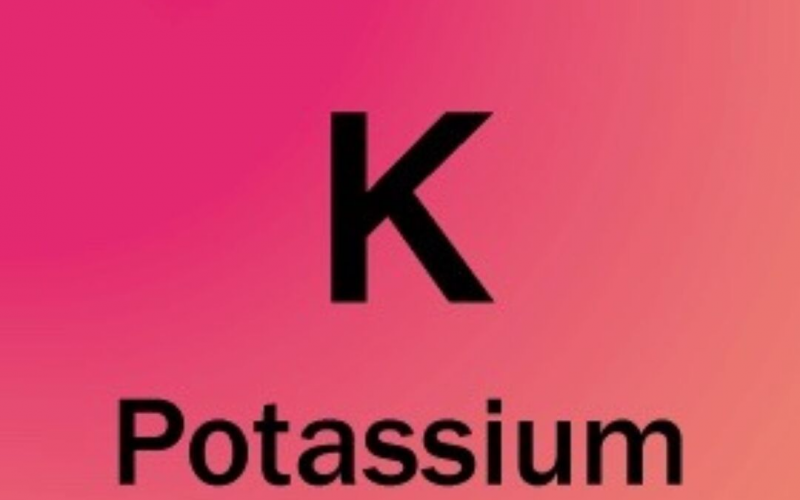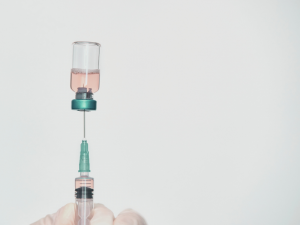Potassium is a mineral and one of the body’s essential electrolytes, and it has many vital roles in maintaining our health. Found in all body tissues and required for normal cell function helping to regulate fluid balance, the electrical activity of the heart and the control of other muscles. Potassium is present in many foods and available as a dietary supplement, it counteracts the effects of sodium (salt), helping to support consistent blood pressure.
The balance between potassium and sodium is crucial to reducing the risk of cardiovascular disease. A study compared people who ate 1,000 milligrams (mg) of potassium-rich foods per day, with those who consumed optimal levels of 4000 mg of each day. They reported a 49% lower risk of death from ischaemic heart disease in an optimal group.
Potassium, fast facts.
- A high potassium intake reduces the risk of overall mortality by 20%
- It decreases the risk of stroke, lowers blood pressure, protects against loss of muscle mass, preserves bone mineral density, and reduces the risk of kidney stones.
- Doctors have associated low potassium intake with high blood pressure and cardiovascular disease.
Are you at risk of deficiency?
- A severe bout of vomiting and diarrhoea will in vulnerable individuals cause low levels.
- Excessive sweating can cause low levels; exercise-induced or during an unseasonal hot British summer or while visiting tropical countries.
- A history of eating disorders such as anorexia nervosa or bulimia will increase the risks.
- Eating lots of liquorice or consuming high doses of liquorice-containing herbal supplements can cause problems with potassium absorption.
Liquorice and potassium levels, here’s the science bit.
Glycyrrhizin is the sweetening compound found in liquorice root, it stimulates the kidneys to release potassium, which can be problematic in some people if their levels drop too low.

Symptoms of low potassium levels include:
- Fatigue and malaise
- Muscle weakness and pain
- Constipation
- High blood pressure.
- Oedema (swelling)
In severe cases, symptoms may include:
- Muscle paralysis or intermittent muscle spasms
- Respiratory failure
- Dangerous heart rhythms.
- Painful obstructions in the gut
- Neurological symptoms including tingling, crawling, numb, or itchy sensations in the hands, feet, legs, or arms
Diagnosis
A simple blood test will show blood potassium levels, doctors treat deficiencies with dietary advice or supplements. Repeat screenings should be offered to track levels and avoid any future problems.
Low potassium
Hypokalemia is the medical term for low potassium in the blood; it can occur for several reasons including as a side-effect of medication such as diuretics or water tablets.
Caution for people with kidney disease and high blood pressure
Some people need to follow a low-potassium diet because of kidney problems, or due to certain medicines which control hypertension (high blood pressure). Doctors should refer these patients to a specialist dietician for advice on maintaining optimal levels.
Can you have too much Potassium?
Hyperkalemia is the medical name for high potassium in the blood and can be caused by:
- A sudden injury to the kidneys, or because someone has severe chronic kidney disease
- Some medications such as Angiotensin-converting enzyme (ACE) inhibitors can cause the levels to be too high in the body.
- Hyperkalemia is the medical name for high potassium in the blood and can be caused by:
Note: In most cases, Hyperkalemia will be symptomless or present with few symptoms, but severe Hyperkalemia can cause heart palpitations, shortness of breath, and chest pain and can become a life-threatening condition that requires immediate medical attention.
Potassium-rich foods
Fruit and vegetables are good sources, especially tropical fruits such as bananas, mango, papaya, kiwi, and melon. Too exotic for you? Oranges and pears are also rich in potassium along with avocado, squash, spinach, potatoes (sweet and white), wild-caught salmon, dried apricots, pomegranate, coconut water, beans, and yoghurt. Whole grains, wholemeal bread, and brown rice are other useful dietary sources for those not fans of rainbow-coloured foods.
How much do we need?
The World Health Organisation recommendations state that adults should eat at least 3510 mg of potassium daily. Note this is less than the optimal levels of 4000 gm noted to reduce cardiac risks. However, a recent Stroke study found that few people met that target.
A day intake looks like this
These are typical adult portions
- Baked potatoes 544 mg
- Avocado: 485 mg
- Spinach, cooked: 466 mg
- Edamame beans: 436 mg
- Salmon, cooked: 414 mg
- Bananas: 358 mg
- Plain nonfat yoghurt 260 mg
- Broccoli 230 mg
- Cantaloupe 215 mg
- Tomatoes 290 mg
- Milk 350mg
An easy way to reduce the harmful effects of high-sodium foods or dishes is to eat a high-potassium fruit or vegetable with each meal.

Summary
Potassium is vital to our health; it has a role in every beat of the heart helping to pump blood around. It ensures muscles and nerves work efficiently, and the kidneys filter waste from the blood. For most people eating a healthy diet should avoid deficiencies while eating a rainbow-coloured variety of fruit and vegetables daily will help ensure heart health and optimal vitality.
SaveSave
SaveSave
SaveSave
SaveSave







